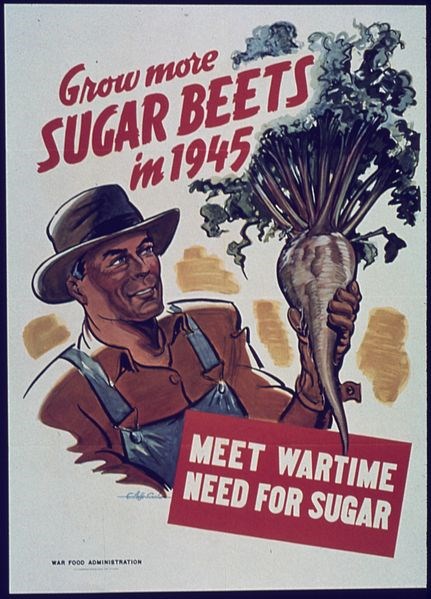Our word beet (Beta vulgaris) comes from the Celtic word beta, meaning red while vulgaris means common. A cool season biennial vegetable, they develop roots and leaves their first year and flower and seed their second. For most gardeners, it is the first season that counts.
A somewhat vulgaris history
Preserved on eighth-century BC cuniform tablets from Babylon, beets were first domesticated for their leaves in the Fertile Crescent, an area between the Nile and Indus rivers, in the 2nd millennium BC. They were well established around the Mediterranean by Greek classical times where their leaves were used medicinally as well as for flavouring. The large bulbs were not known until the Christian era.
Beets gradually spread through Europe where they were called “Roman beet” in Tudor times because their swollen red taproots were developed in Italy during the Roman era. These early beets were coarse, misshapen and hairy. The smaller globes eaten today were not developed until the 1800s.
In his Herbal of 1597, Gerald described them as growing to 12 feet (!!!), noting “The greater red bet or Roman beet boyled and eaten with oyle, vinegre and pepper is a most excellent and delicate salad.”
A major development occurred in 1747 when Andreas Marggraf, a German chemist, described how to extract sugar from beets. Before that, sugar had been obtained only from sugar cane. By 1802, the first sugar-extracting factory had been built in Kunern, Silesia (now Konary in Poland). Silesian sugar beets contain about six per cent sugar. This selection became the progenitor of all modern sugar beets. (Unfortunately, the Swiss inventor went bankrupt and died a beggar.)
In response to British blockades of cane sugar during the Napoleonic Wars, Napolean subsidized the study of sugar beets and ordered that 28,000 hectares (69,000 acres) be devoted to growing them, thus stimulating the rapid growth of a European sugar beet industry. In 1840, about five per cent of the world's sugar was derived from sugar beets. By 1880, this number had risen more than tenfold to over 50 per cent. Sugar beets today are also used in alcohol production.
By 1828, four varieties were listed in American seed catalogues. ‘Detroit Dark Red’ was available in the United States by 1892. Colours today range from dark purple-red to white. The white beet is used for livestock
Betacyanin, the pigment responsible for the red colour, is extremely water-soluble. As well as colouring borscht, it is also used for rogue. And “individuals lacking the proper genes to metabolize betacyanin” pee pink after consuming beets.
Growing Beets
Among the varieties recommended for Saskatchewan are Detroit Dark Red and Early Wonder. Beets are best grown in full sun in a sandy, sandy loam or loam soil well amended with organic matter such as compost or well-rotted manure. In heavy soils or if drainage is poor, try raised beds.
For best germination and growth, they need even watering. Keep them well-weeded as they are poor competitors with other plants, especially when they are young. Excessive weeds and uneven watering can result in stringy or tough beets.
Beet roots will be ready for harvest in 60 to 70 days, depending on weather and the variety. Beet tops (leaves) can be harvested throughout the growing season, taking care to take only a few outer leaves of each plant at any one time. The beetroots are best when young and tender and about 5-7 cm in diameter. Harvest before hard frost. Before storage, remove the beet tops and excess soil. If you feel compelled to wash them, do so very gently. Avoid cutting them. Do not store apples in the same location as beets as the ethylene given off from apples will cause bitter flavours to develop in the beets.
Wrapped loosely in plastic, beet tops can be stored in the crisper of the refrigerator for a week. Beets can be stored in plastic bags in the refrigerator for several months. Their ideal storage conditions are near 0˚C with high humidity. Although most home refrigerators are a few degrees warmer than this, they will do the job. Place a few sheets of paper towel in the bag with the beets and switch the paper towels for new ones once they become too moist.
This column is provided courtesy of the Saskatchewan Perennial Society (SPS; [email protected]). Check our website (www.saskperennial.ca) or Facebook page (www.facebook.com/saskperennial) for a list of upcoming gardening events.




